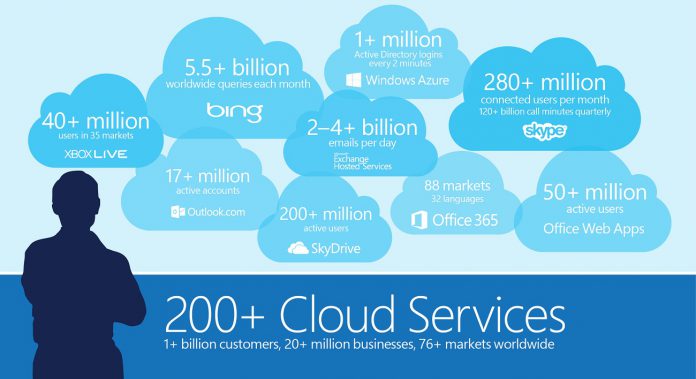Microsoft has enjoyed a resurgence under the stewardship of CEO Satya Nadella. This has largely been achieved by embracing the cloud. Evidence of this has been strong quarterly performance spurred by Azure growth. According to JP Morgan analysts (speaking to the Wall Street Journal), Microsoft doubled Azure revenue in 2016.
This massive growth allowed the company to pull in $2.7 billion in revenue from Azure during the year. Results like this justify Nadella's cloud first, mobile first strategy, but also highlight how much work Microsoft has to do.
For example, Amazon Web Services is the market leader and reported more than $12 billion in revenue during 2016. Microsoft is still far behind those kinds of numbers. However, the company knew it was playing catch up and Azure growth over two years has been excellent.
Indeed, considering the platform is up against Amazon's juggernaut services and still enjoys significant growth is interesting. The other main piece of the cloud market puzzle is Google. The Wall Street Journal reports Aaron Kessler of Raymond James estimated Google Cloud Platform's revenue at $1 billion.
Estimate Accuracy
Of course, it is an analysts job to know the market. That said, we have seen plenty not even be in the ball park before. Microsoft does not publicly report its Azure revenue (equally Google), so it is hard to know how accurate the estimates are.
Microsoft does, however, publicly record its growth in non-monetary terms. At the end of last month, the company revealed Q2 FY 2017 results.
The data showed overall Microsoft increased revenue year-on-year by 1% to $24.1 billion, with $5.2 billion profit. Cloud was a major contributor, with Azure revenue up 93%. Overall revenue for Microsoft's whole cloud operations stood at $6.9 billion.
In July last year, Microsoft announced its Q4 2016 results, ending its fiscal financial year. In those results, the company showed Azure had grew 103%, while overall cloud grew 7% to $6.7 billion.
With overall intelligent cloud revenue growth and Azure percentage growth, the analyst numbers are surely pretty accurate.






